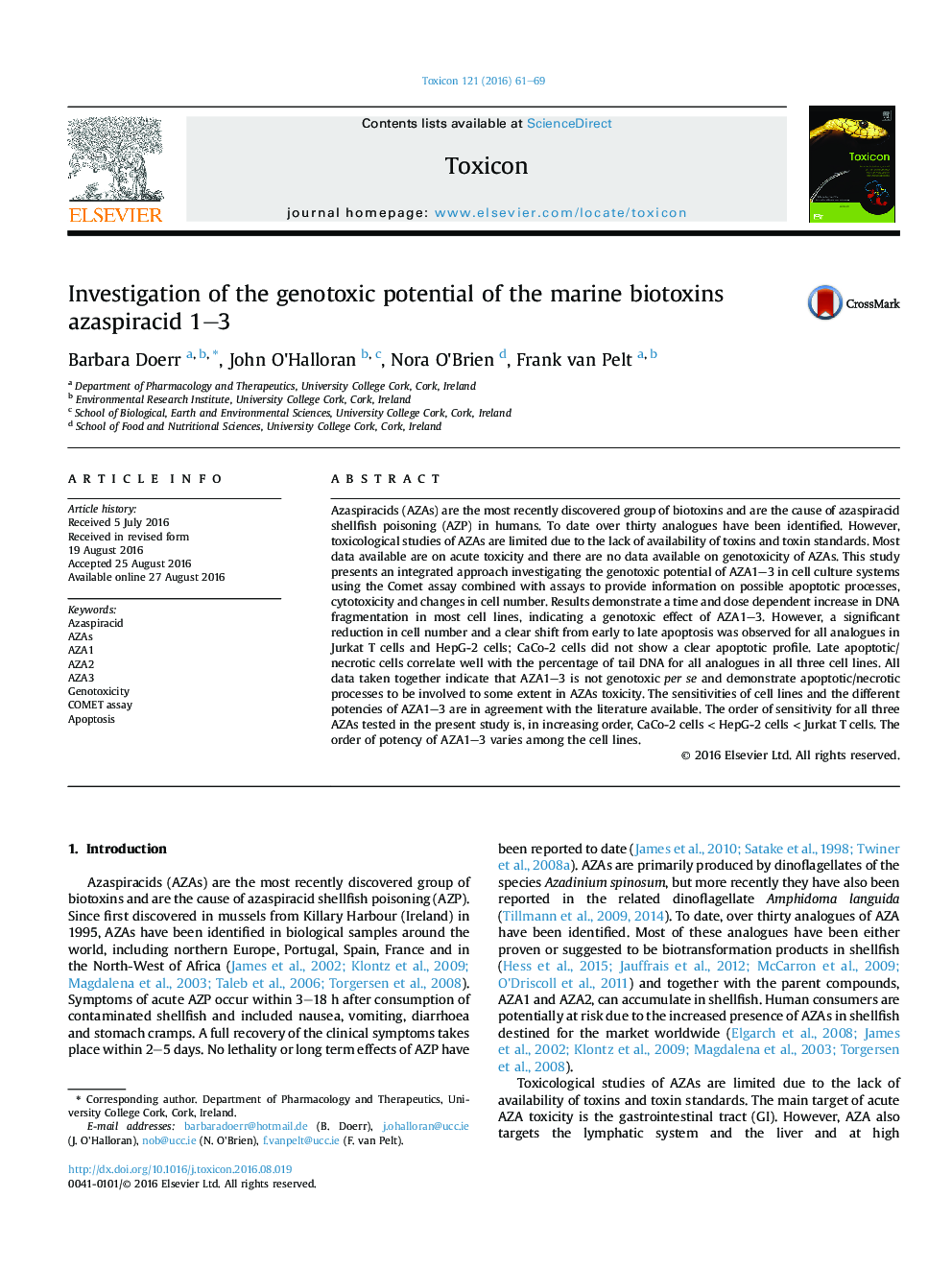| Article ID | Journal | Published Year | Pages | File Type |
|---|---|---|---|---|
| 2063951 | Toxicon | 2016 | 9 Pages |
•Time and dose dependent increase in DNA fragmentation in most cell lines, indicating a genotoxic effect of AZA1-3.•Significant reduction in cell number and clear shift from early to late apoptosis for AZA1-3 in Jurkat T and HepG-2.•Collective data indicate AZA1-3 is not genotoxic per se; show apoptotic/necrotic processes to be involved in AZAs toxicity.•Order of sensitivity for AZA1-3 in the present study is, in increasing order, CaCo-2 < HepG-2 < Jurkat T.•The order of potency of AZA1-3 varies among the cell lines.
Azaspiracids (AZAs) are the most recently discovered group of biotoxins and are the cause of azaspiracid shellfish poisoning (AZP) in humans. To date over thirty analogues have been identified. However, toxicological studies of AZAs are limited due to the lack of availability of toxins and toxin standards. Most data available are on acute toxicity and there are no data available on genotoxicity of AZAs. This study presents an integrated approach investigating the genotoxic potential of AZA1–3 in cell culture systems using the Comet assay combined with assays to provide information on possible apoptotic processes, cytotoxicity and changes in cell number. Results demonstrate a time and dose dependent increase in DNA fragmentation in most cell lines, indicating a genotoxic effect of AZA1–3. However, a significant reduction in cell number and a clear shift from early to late apoptosis was observed for all analogues in Jurkat T cells and HepG-2 cells; CaCo-2 cells did not show a clear apoptotic profile. Late apoptotic/necrotic cells correlate well with the percentage of tail DNA for all analogues in all three cell lines. All data taken together indicate that AZA1–3 is not genotoxic per se and demonstrate apoptotic/necrotic processes to be involved to some extent in AZAs toxicity. The sensitivities of cell lines and the different potencies of AZA1–3 are in agreement with the literature available. The order of sensitivity for all three AZAs tested in the present study is, in increasing order, CaCo-2 cells < HepG-2 cells < Jurkat T cells. The order of potency of AZA1–3 varies among the cell lines.
